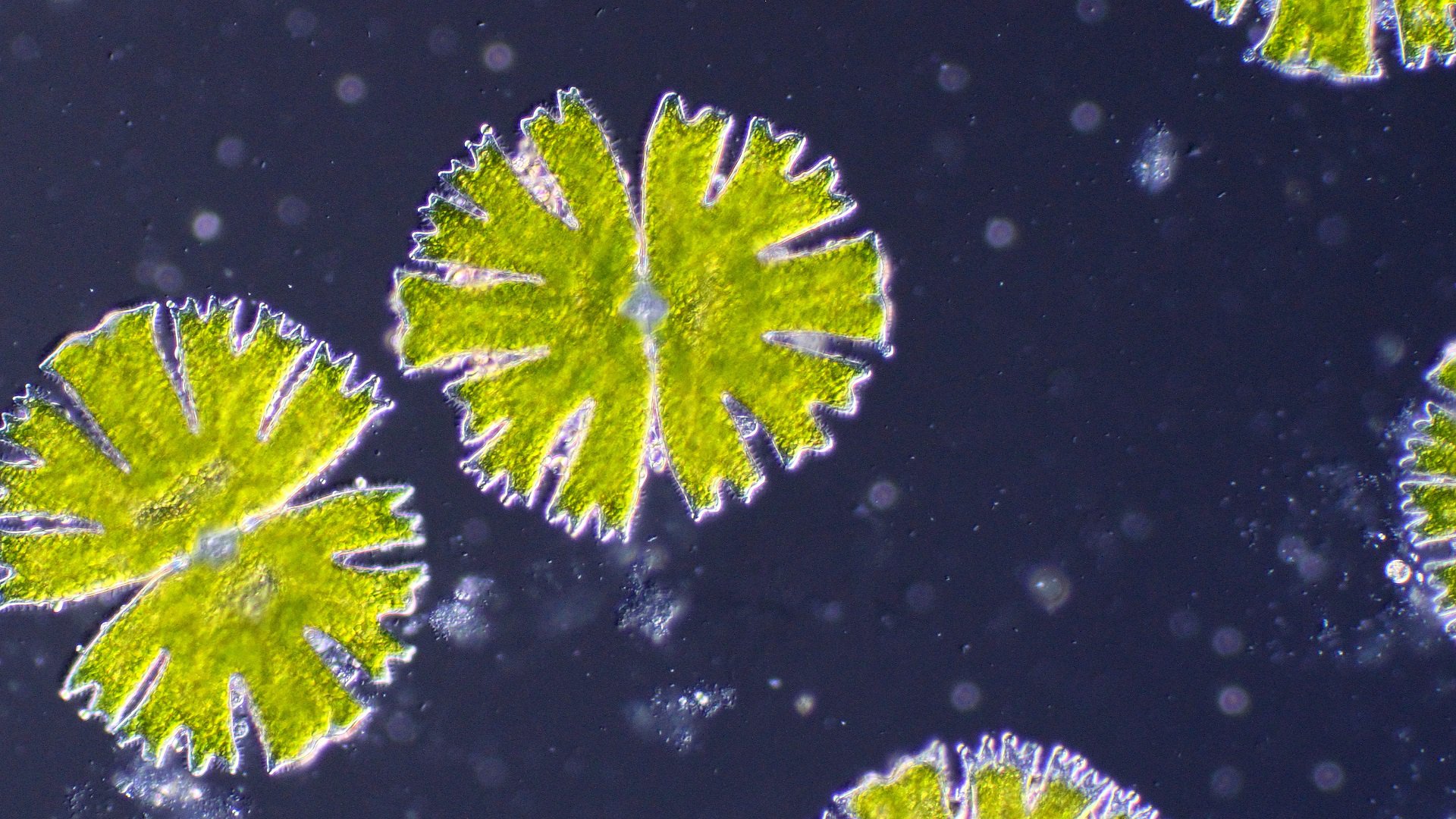Micrasterias thomasiana is a relatively large single-celled microalgae with a diameter of 200 microns (0.2 millimeters). To the naked eye it looks like a fine grain of sand, but through the microscope this algae really shines. It looks like a beautiful green star.
Micrasterias thomasiana is a relatively large single-celled microalgae with a diameter of 200 microns (0.2 millimeters). To the naked eye it looks like a fine grain of sand, but through the microscope this algae really shines. It looks like a beautiful green star.
Two-oneness
Like all species in the genus Micrasterias, each cell consists of two half-cells that are a mirror image of each other. The half-cells each contain one large chloroplast and are connected by a bridge in the centre of the "star" that contains the cell nucleus.
Microscopical model
M. thomasiana, together with land plants, belongs to the Charophyta. This algae is more closely related to "real" plants than other microalgae that can seen in Micropia, such as Chlamydomonas reinhardtii or Chlorella vulgaris. For this reason, experiments with Micrasterias have been conducted since the 1960s to gain insight into the cell biology of land plants.
Fundament of the food chain
Micrasterias algae live in fresh water and have a worldwide distribution, from the tropics to the polar regions. Together with the rest of the phytoplankton, they form the basis of the aquatic food chain. It is therefore no coincidence that M. thomasiana can be seen in Micropia as one of the regulars in the "Who eats whom?" exhibit.

